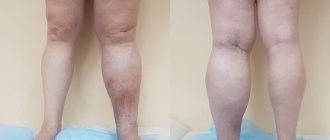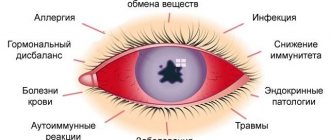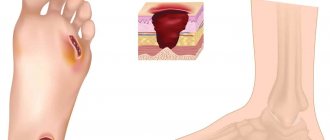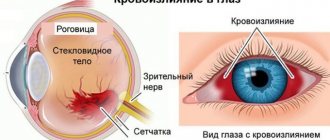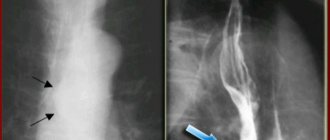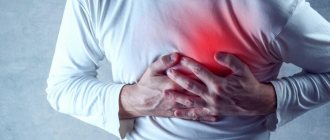Acute and chronic diseases of the pancreas negatively affect the state of the digestive system. Thus, with chronic pancreatitis, the digestibility of certain foods is often impaired, fermentation processes in the intestines are enhanced, and flatulence occurs.
In this case, a therapeutic diet is an important method of treatment. To plan dietary meals, patients often try to find information about what foods the pancreas likes. Based on the patient's condition, a nutritionist can recommend several basic nutritional options.
What is pancreatitis
Pancreatitis in medicine refers to the inflammatory process in the pancreas, the development of which is caused by:
- Galloon pathologies, stomach, duodenum;
- Unhealthy diet;
- diabetes;
- Severe poisoning;
- Injuries, surgery in the abdominal area.
The disease often occurs during pregnancy or during drug therapy with estrogen, glucocorticosteroids, sulfonamides, tetracyclines. The risk of developing pancreatitis is present in infectious diseases (hepatitis, chickenpox, swine), and the presence of a genetic predisposition to gastrointestinal disorders.
The disease develops against the background of impaired outflow of enzymes and digestive juices in the small intestine. Their accumulation leads to compression of the pancreatic wires, the development of inflammation and swelling. Destructive processes are activated in the Orguard patient, and Gland begins to digest.
Disease progression is associated with the death of pancreatic tissue and the vessels and organs adjacent to the pancreas. This leads to a serious deterioration in the patient's condition and even death.
How does it affect blood pressure?
You may be under the impression that there is no strict relationship between blood pressure and the pancreas. In fact, the situation is completely different. Blood pressure in pancreatitis can both rise and fall. The first option is possible during the attack of an acute disease, while the second option more often appears in patients with a chronic form of pathology and internal bleeding (bleeding).
During exacerbation and in the acute stage
Increasing severity of pancreatic disease causes the most severe feelings of pain. This condition releases stress hormones into the bloodstream and increases the activity of the autonomic nervous system. The patient's blood vessels are disturbed and the overall blood flow is impaired.
Increased blood pressure in the acute phase of pancreatitis occurs against the background of psycho-emotional stress and metabolic disorders. This leads to disruption of the mechanisms that control the arteries.
Worsening of pancreatitis can lead to the development of a breakthrough of excess pressure and its typical complications. Often the increase in pressure is short-lived and gives way to hypotension.
In remission and chronic course
Chronic inflammation of the pancreas is characterized by hypertensive pressure, leaving patients alternately with hypertension and hypotension.
Factors that contribute to frequent fluctuations in blood pressure:
- Inability of the pancreas to perform basic functions (this leads to nutritional deficiency, insufficient absorption of micro- and macroelements necessary to maintain the proper functioning of blood vessels and myocardium, provokes poisoning of the body).
- Swelling of the patient, leading to depression of the surrounding lymph nodes, blood vessels, nerve endings, activation of the autonomic system and increased pressure.
- Insufficient production of insulin by the pancreas, a hormone necessary for the proper use of glucose. As a result of this malfunction, the development of diabetes occurs.
Patients with pancreatitis often develop diabetic nephropathy, in which sodium is not excreted from the body, stopping fluids. This leads to an increase in total blood volume and blood pressure increases.
What is the prognosis of a patient with hypertension due to pancreatitis?
The prognosis of a patient with a combination of pancreatitis and hypertension is unfavorable. In severe acute cases of the disease, death is possible in the first days due to the development of shock.
Chronic inflammation of the pancreas with periodic exacerbations leads to exhaustion of the body, deviations in water-salt and electrolyte balance. Anemia, hypoproteinemia, disturbances in the ratio of protein fractions, and accelerated ESR are possible. These factors negatively affect the functioning of the cardiovascular system and, against the background of hypertension, can cause a lot of complications, including strokes and heart attacks. The appearance of pancreatogenic diabetes further aggravates the course of the disease and worsens the further prognosis.
Prevention of complications of pancreatic hypertension are:
- following a diet (excluding fatty, fried, spicy foods, eating plant foods);
- cessation of drinking alcohol and smoking;
- normalization of body weight;
- performing moderate physical activity;
- avoidance of stressful situations;
- compliance with doctor's recommendations.
Symptoms of high blood pressure with pancreatitis
If high blood pressure and pancreatitis occur together, the patient will experience the following symptoms
- dizziness;
- Impaired temporary vision;
- headache;
- Ears;
- Palpitations;
- numbness of fingers;
- "Goose bumps" on the skin;
- sleep disorders;
- Excessive nerve stimulation.
Pancreatic hypertension can cause swelling of the face and limbs, hyperhidrosis (increased sweating) and heart pain. A sudden increase in blood pressure is often accompanied by severe epigastric pain, which then moves to the lumbar region.
A sudden increase in blood pressure is a symptom that accompanies pain shock, indicating the development of an attack of acute pancreatitis or the manifestation of pancreatic necrosis.
Pancreatic necrosis.
Pancreatic necrosis is a severe form of pancreatitis, which results in changes in the parenchyma of the pancreas that are degenerative and destructive in nature.
Pancreatic necrosis is more common at a young age, women are most susceptible to it.
Causes of pancreatic necrosis.
Among the causes of pancreatic necrosis, gastroenterologists most often name cholelithiasis, cholecystitis, unhealthy diet, complications after surgery or injury, abuse of alcohol, nicotine, drugs, infections, viruses.
Symptoms of pancreatic necrosis.
Symptoms of pancreatic necrosis are pain in the abdominal area.
Repeated vomiting, attacks of nausea, constant dry mouth, skin pigmentation, attacks of shortness of breath, even at rest, may also indicate pancreatic necrosis; feeling of weakness, mental restlessness and tension.
Methods for diagnosing pancreatic necrosis.
To diagnose pancreatic necrosis, the same studies and tests are used as for pancreatitis.
Diagnosis
According to medical statistics, in 65% of cases, arterial hypertension is caused by a malfunction of the pancreas. Therefore, in the case of periodic increases in blood pressure, mandatory examination for pancreatitis is recommended.
The main diagnostic measures will be:
- Anamnesis collection.
- External examination of the skin, palpation of the abdominal cavity.
- Clinical and biochemical blood test.
- Urine and stool analysis.
- Ultrasound examination of internal organs.
If complications occur, the patient is prescribed computed tomography (CT) or endoscopic retrograde cholangiopancreatography (ERCPG). Less commonly, in case of damage to the pancreas, laparoscopy, abdominal radiography and fibrogastroduodenoscopy (FGDS) are used.
Treatment methods
To normalize blood pressure, pancreatitis and other parallel diseases are successfully treated. When the pathology worsens, the patient is hospitalized. In addition to pharmacological treatment, the patient is advised to fast and rest. Chronic pancreatitis requires adherence to a diet and a course of enzyme analgesics.
Medication
Among the drugs for acute pancreatitis, arterial hypertension progresses:
- Antispasmodics (Papaverine, No-shpa).
- Painkillers (Analgin, Baralgin).
- Anti-dehydration medications (Regidron, Alvogen).
The patient is prescribed detoxification therapy, administration of saline and colloidal solutions. General treatment helps eliminate vascular spasm, relieve swelling of the pancreas and adjacent tissues, and reduce the activity of the autonomic nervous system. Patients with acute pancreatitis are not prescribed antihypertensive tablets. This helps avoid the risk of a sudden drop in blood pressure and the development of collapse.
In the chronic form of pancreatitis, accompanied by increased blood pressure, the patient requires constant antihypertensive maintenance therapy. The administration of ACE inhibitors, beta-blockers and diuretics becomes important.
To normalize the functioning of the pancreas, it is advisable to take Pancreatin, Festal. To suppress secretory functions, a course with Contrical helps. The patient still needs to follow the diet rules.
Patients who simultaneously suffer from pancreatitis, hypertension and diabetes mellitus need to additionally take medications that lower blood sugar levels, stimulate insulin production, hormonal drugs, and statins.
Surgery
The department of surgical intervention is decided by specialists in cases where traditional treatment of pancreatitis does not bring relief to the patient. In such cases, irrigation, abdominal irrigation and drainage are indicated. In rare cases, surgeons perform necrectomy, that is, removal of diseased tissue from a diseased organ. If there are appropriate indications, resection of the gallbladder is performed in remission.
ethnoscience
Before using folk remedies for pancreatitis complicated by hypertension, it is necessary to obtain the consent of the attending physician. If the specialist deems it necessary, the patient can supplement basic therapy:
- fresh potato juice;
- milk thistle seeds;
- dill infusion;
- mumiyo solution;
- propolis tincture with milk.
Alternative medicine offers a significant number of herbal combinations that help avoid the progression of pathology - token + chamomile + wormwood (in a ratio of 4: 3: 2), celery + corn silk + fertilization + anise + tricolor (1: 1). ratio). Water infusions are prepared from such herbal mixtures, which are recommended to be taken several times a day.
Pain and pancreas
Lecture transcript
XXV All-Russian Educational Internet Session for doctors
Total duration: 20:42
00:00
Oksana Mikhailovna Drapkina, Secretary of the Interdepartmental Scientific Council on Therapy of the Russian Academy of Medical Sciences, Doctor of Medical Sciences, Professor:
— The next message will be made by Professor Oleg Samuilovich Shifrin: “Pain and the pancreas.”
Oleg Samuilovich Shifrin, Doctor of Medical Sciences:
— Dear colleagues! I will begin my presentation with a small clinical example. A 55-year-old patient came to our clinic (under the leadership of Academician Vladimir Trofimovich Ivashkin) with complaints of epigastric pain radiating to the back, left hypochondrium, occurring 40-50 minutes after eating, as well as at night. The pain is quite intense, sharply reducing the patient’s quality of life.
From the history of the disease. Considers himself sick for three years when similar pain sensations began to arise after eating. At first less intense, but then increasingly intensifying. From the anamnesis, it was noted that for a long time the man smoked intensively, consuming up to one and a half, two packs of cigarettes per day.
The patient was already diagnosed with chronic pancreatitis at the prehospital stage. Various enzyme preparations containing bile acids were prescribed in combination with proton pump blockers. There was no effect. The patient continued to experience intense pain, including at night. The addition of antispasmodics also did not radically improve the situation.
In our clinic, the patient was diagnosed with a painful form of chronic pancreatitis. Pancreatin tablets that do not contain bile acids, in the form of Mezim 10000, were prescribed as an antianginal agent. Against this background, an almost radical improvement occurred. Pain symptoms have practically disappeared.
Abdominal pain is the most important cardinal symptom of the initial stages of the development of chronic pancreatitis. This slide shows work from the end of the last century, in which, based on an assessment of a significant number of observations, it was established that abdominal pain bothers almost 90% of patients with chronic pancreatitis in the initial stages. At the same time, other symptoms of chronic pancreatitis (diarrhea, symptoms of pancreatic diabetes mellitus, jaundice) are much less likely to bother patients.
02:52
But pain is different. Pain in chronic pancreatitis has different origins. We must evaluate it differently. What may be associated with abdominal pain in chronic pancreatitis? First of all, with the actual inflammation of the pancreas tissue. The inflammatory exudate compresses the nerve endings, naturally causing pain.
If alteration predominates in the process of inflammation, then biologically active substances damage the hyaline membranes of nerve fibers and affect the nerve plexuses. Abdominal pain in these cases will be even more intense.
I gave examples of the etiology of the so-called type A pain. Pain associated directly with inflammation of the pancreas tissue. But with pancreatitis, other pain is often encountered. Fundamentally different pain in nature! Pain associated with the actual complication of inflammation in the tissues of the pancreas.
This pain may be associated with increased pressure in the pancreatic ducts due to obstruction by calcifications or compression of fibrotically altered pancreatic tissue.
When the pressure in the pancreatic ducts increases, the tiled epithelium lining them desquamates. Aggressive pancreatic juice affects the nerve plexuses contained in their wall.
Another cause of this type of pain is pseudocysts, peculiar wounds in the body of the pancreas, where aggressive pancreatic juice also affects the exposed nerve endings.
A common cause of such pain (type B pain): compression of the common bile duct by the enlarged head of the pancreas or stenosis of the duodenum due to the same reason.
Briefly summarizing the main causes of pancreatic pain, we can reduce them to the following factors. Increased intraductal pressure and stretching of the pancreatic capsule. Compression of the pancreatic ducts due to fibrotic changes in the organ tissue. Ischemia of pancreatic tissue. Destruction of ductal epithelium.
05:31
Pain may also be associated with the changes that occur during chronic pancreatitis in other organs. These are, first of all, gastroduodenal ulcers, which arise due to a decrease in the alkalizing role of the bicarbonate solution that the pancreas produces in conditions of illness.
Thrombosis of the splenic vein is possible with the development of acute pancreatitis. Finally, in severe forms of acute pancreatitis, pleurisy may also occur, which also in some cases causes severe abdominal pain.
Pain may also occur due to decreased exocrine pancreatic function. A decrease in the production of enzymes and a decrease in the production of bicarbonate solution by the pancreas leads to excessive acidification of the initial parts of the duodenum, impaired motility and the natural development of such a symptom as flatulence.
Moreover, it is sometimes very difficult for the patient to distinguish what is bothering him: flatulence or pain. These symptoms may subjectively overlap with each other.
At the end of the last century, classical controlled studies were conducted to compare the effect of various types of enzyme preparations on the level of abdominal pain in chronic pancreatitis. This study included thousands of patients. It was found that traditional tablet preparations of pancreatin significantly reduced the pressure in the pancreatic ducts of the pancreas and reduced the level of abdominal pain.
At the same time, microgranular preparations of pancreatin did not significantly reduce the elevated level of pressure in the pancreatic ducts and did not reduce the severity of abdominal pain in patients.
Why is this happening? Enteric-coated pancreatin particles contained in a microgranular preparation, entering the upper duodenum and stomach, cannot be broken down in time due to the fact that the function of producing bicarbonates by the pancreas suffers primarily in exocrine insufficiency.
As a result, acidification of the upper parts of the duodenum occurs. Pancreatin microgranules begin to break down in the deeper parts of the duodenum, where the releasing system no longer works.
08:44
At the same time, pancreatin tablets, in which the particles of the active substance are not protected by an enteric coating, begin to disintegrate and begin their biological function already in the upper parts of the duodenum, where the releasing system operates.
Accordingly, according to the law, the production of pancreatic enzymes by the pancreas decreases through a negative feedback mechanism. The pressure in this organ, in its ducts and in the parenchyma decreases. The level of pain decreases.
Let's consider the algorithm for treating the painful form of chronic pancreatitis, proposed by the American Gastroenterological Association at the end of the last century.
At the first stage, we must confirm the diagnosis. Pain in the upper abdominal cavity is not only caused by pancreatitis. This could be a peptic ulcer, pancreatic cancer, or many other diseases, so the pain from which the patient suffers cannot be reduced only to chronic pancreatitis.
The diagnosis requires confirmation (this is a complex diagnosis). Using modern ultrasound methods, computed tomography, magnetic resonance imaging, and modern laboratory methods, we can and must confirm this diagnosis.
In some rare cases, it is possible to use ERCP, but when referring a patient for this study, it should be remembered that in almost 10% of cases it is complicated by the development of acute pancreatitis, and therefore should be performed only according to strict indications.
Good - the diagnosis of pancreatitis was confirmed. In any case, the patient is prescribed a low-fat diet. The patient must exclude alcohol, I emphasize, for any form of chronic pancreatitis! Both with alcohol and non-alcohol. The patient must avoid smoking. This is the most important pancreatogenic factor, the importance of which, unfortunately, is not yet sufficiently appreciated by either patients or even doctors.
In order for the attending physician to properly assess the patient’s condition, the patient is recommended to keep a daily diary of monitoring his well-being, in which he assesses the level of abdominal pain. If pain persists, the patient can and should use antianginal drugs. For example, such as trimebutine and paracetamol.
11:35
Are these activities ineffective? Then the patient is prescribed a long course of tablets containing pancreatin, and in high doses. These drugs can be combined with inhibitors of gastric secretion: primarily with proton pump blockers. H2 blockers are much less effective here.
Are we not helping the sick? Does he still have abdominal pain? Then the patient should be offered a choice between watchful waiting and surgical treatment. But at the same time, the positive possibilities of surgical treatment and possible complications of surgical treatment must be explained to the patient.
If there is dilatation of the ducts, the patient is sent for drainage operations. If the ducts are not dilated, then surgical denervation of the pancreas or even resection of part of this organ is performed.
So, the main treatment directions in the management of patients with a painful form of chronic pancreatitis. At the first stage, this is a diet, a complete cessation of alcohol consumption (I will add - smoking). Prescription of analgesics. Tableted enzyme preparations in high doses. Firstly, in order to create functional rest of the organ and as a replacement therapy.
Treatment of spastic disorders that naturally occur in chronic pancreatitis from smooth muscle organs, from the bile ducts, from various parts of the intestine. It is advisable to prescribe trimebutine, a drug that has both antispasmodic and analgesic effects.
We must not forget about medical denervation of the pancreas. Well-known cyclic antidepressants can help us here.
Finally, if all these measures are ineffective, the patient is referred for a consultation with an endoscopist and surgeon to decide on further management tactics.
13:55
Our clinic conducted an uncontrolled comparison of the effect on pain of traditional pancreatin tablets in the form of Mezim 10,000 and a microgranular preparation also containing 10,000 units of lipase. The observation period is 4 weeks. The groups of patients were approximately the same type. They consisted of patients with chronic pancreatitis of alcoholic, biliary etiology and mixed etiology.
We were convinced that the tablet preparation of pancreatin reduces the severity of abdominal pain to a greater extent than the microgranular preparation. Moreover, the effect on the level of flatulence turned out to be approximately the same.
It is important to note that the pancreatin tablet preparation caused constipation less frequently than the microgranular preparation. I would like to emphasize that we considered patients with relatively preserved exocrine pancreatic function. They did not have gross violations of the external secretory function in the form of severe diarrhea, malabsorption, and so on.
Prescribing adequate tableted pancreatic enzymes makes it possible to largely avoid the use of antisecretory drugs. This table shows that almost half of the patients to whom we prescribed Mezim 10,000 were able to stop using proton pump blockers.
A separate group consists of patients with chronic pancreatitis with severe atherosclerosis of the mesenteric vessels. This slide shows an example of an elderly patient (72 years old) with severe calcification of the mesenteric vessels.
15:59
The management of these patients has some peculiarities. Since such patients are significantly more often diagnosed with gastroduodenal erosive lesions, they should not be prescribed NSAIDs as antianginal drugs, as discussed in the previous lecture.
It is better for these patients to be prescribed antianginal drugs such as paracetamol or trimebutine. They pose a much lesser threat in terms of the development of gastroduodenal bleeding.
A very important aspect is smoking. Smoking, in its importance, is obviously not much inferior to alcohol in terms of its negative pancreatogenic effect. Please note: all our efforts, all our efforts to treat abdominal pain in sick smokers suffering from pancreatitis, were, as a rule, ineffective.
In order for us to help them, they either needed to quit smoking or significantly reduce the number of cigarettes they consumed. At least less than 10 per day - so that their smoker index is low.
Pay attention to this table. The survey was conducted among patients suffering from chronic pancreatitis, Muscovites, usually with higher education.
Everyone knows that smoking negatively affects the lungs. Most people know that smoking has cardiotoxic effects. About half know that smoking has a negative effect on the stomach and potency in men. But only 10%, only three out of thirty patients suffering from chronic pancreatitis, socially active people with higher education, knew that smoking negatively affects the pancreas.
These are, of course, devastating figures that indicate the low effectiveness of our propaganda among patients.
So, let us once again emphasize the possible reasons for the ineffectiveness of antianginal therapy in patients with chronic pancreatitis. These are, first of all, inadequate doses of the drug, when the doctor knows that we should prescribe the medicine one tablet three times a day. This is completely wrong!
We must proceed from the fact that the clinical picture in each specific case is individual. The patient needs to be prescribed the amount of medicine that he needs to eliminate the symptoms of the disease and eliminate the further development of the disease.
Failure of the patient to comply with the treatment regimen. We have encountered cases where, for example, patients took enzyme preparations for pancreatitis half an hour after meals. They explained this by saying that they did not want to harm the stomach. The doctor did not explain at the prehospital stage when to take the drug. It would seem funny if it weren't sad.
Wrong choice of treatment regimen. As I have already given in a clinical example, they try to treat anginal pain in chronic pancreatitis with enzyme preparations containing bile acids.
Wrong diagnosis. Naturally, no drug (neither enzymatic nor secretory) will help with pancreatic cancer. In this case, the patient can only be helped by a timely diagnosis.
Finally, the attending physician should remember that sufficient time is needed to evaluate the effectiveness of the chosen treatment tactics. As a rule, at least 2-4 weeks. This is the only way we can help a patient with chronic pancreatitis suffering from abdominal pain.
Thank you very much.
20:42
Preventive measures
To avoid increased blood pressure during pancreatitis, it is recommended:
- Compliance with a dietary diet (exclusion from the menu of high-calorie, spicy and salty foods).
- Regularly engage in accessible sports and breathing exercises.
- Stay in the fresh air every day (at least 1 hour a day).
For patients with symptoms of pathology, it is equally important to quit smoking and get enough sleep. Avoid stress, minimize the consumption of alcohol, strong tonic drinks - coffee and black tea.




